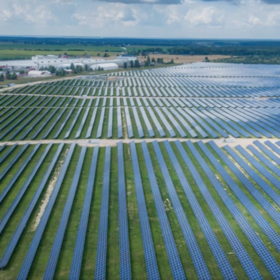From pv magazine Global
Researchers at the Central University of Jharkhand in India have developed a thermal energy system for buildings that uses an earth-to-air heat exchanger (EAHE) system powered by a standalone PV system.
An EAHE is a passive geothermic solution consisting of a buried pipe system circulating fresh air. These systems are commonly used to warm up fresh air in buildings in the winter and to cool it down in the summer.
“To put it simply, EAHE is based on the concept of utilizing temperatures below 2-3 m from the earth’s surface that remains consistent throughout the year irrespective of ambient air temperature variations,” researcher Basudev Pradhan told pv magazine. “The temperature beneath the earth’s surface is cooler in the summer and warmer in the winter than the air above. So, the designed system will blow ambient air through a pipe installed at a certain depth from the surface, and the air will get warmer or cooler in winter of summer due to heat exchange with the surrounding soil.”
The scientists designed the proposed PV-powered EAHE with a statistical tool response surface approach, using calculation and modeling software. The EAHE is designed to have PVC pipes tilted by a small angle to prevent condensed water from standing inside and to be buried horizontally. The solar array consists of PV panels, charge controllers, an inverter, and a battery.
The researchers assumed the EAHE was to be operated for 24 hours in all months except for July and August. They said the seasonal energy efficiency ratio (SEER) is estimated to be 7.34 for cooling and 8.99 for heating. They also calculated that the yearly heating and cooling potential of the system is 4158 kWh/year and 3958.7 kWh/year, respectively.
“So, it can be concluded from the revealed information that in winter, the designed EAHE system works more effectively than in the summer season,” they explained.
They said the designed setup with optimized parameters results in an annual energy gain of 8116.7 kWh.
“If 24-hour grid electricity is available, a solar system has a straightforward payback period of four to five years,” the researchers said. “Moreover, this hybrid system has the potential to provide carbon credit of US$ 336.86 kWh/year. Thus, this system is an energy-saving and environment-friendly approach for both urban areas with 24 h grid availability as well as rural areas where grid extension is not possible or feasible due to some technical barriers.”
They presented the system in the paper “Numerical simulation of stand-alone photovoltaic integrated with earth to air heat exchanger for space heating/cooling of a residential building,” which was recently published in Renewable Energy.
“Such efficient, standalone, net zero systems can be further optimized for various location and climate conditions depending upon the variation in the atmospheric and earth parameters,” said Pradhan.
This content is protected by copyright and may not be reused. If you want to cooperate with us and would like to reuse some of our content, please contact: editors@pv-magazine.com.









This will develop mold and be useless in a short time.
There are several ways to address the mold problem from condensation. The simplest is to create a 1.5 degree gradient in the underground tube. Even then it is likely to deve mold. It is essential that tubing is cleaned every 2 months by chemical agents added to th forced air. Good quality filters are required on both ends to ensure good air quality. I have seen an installation in Frankfurt, Germany where the total length of the underground tubing i(8″ diameter) s 15 km. It works like a charm.